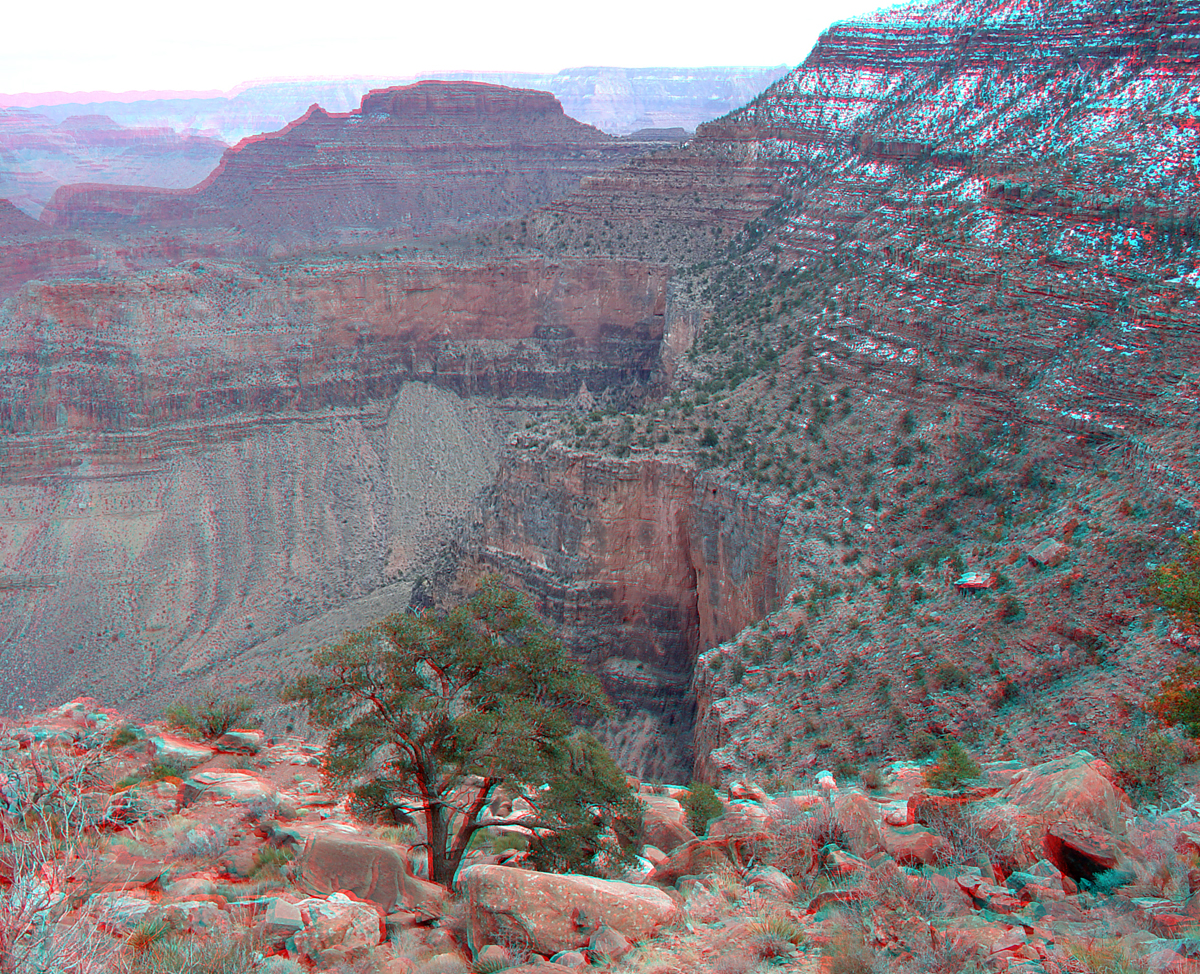
View looking east from the South Kaibab Trail. This view highlights the Paleozoic stratigraphy exposed in the central section of the Grand Canyon. From bottom to top, the stratigraphy is as follows. On the far wall of the canyon (in the center and left of the image), the slope-forming, Cambrian-age Bright Angel Shale which is mostly covered with talus in this image. At the top of the slope is the massive cliffs of the Redwall Escarpment. The lowest, dark, cliff-forming ledges in the escarpment are the Muav Limestone, also of Cambrian Age. Above a thin ledge is a massive, dark-gray stained, limestone wall of the Devonian-age Temple Butte Formation. The rest of the cliff above the first massive ledge is the Mississippi-age Redwall Limestone. The great cliff face, the snow-frosted slopes of the lower Supai Group rise above the massive cliffs of the underlying Redwall Limestone. The Supai Group is subdivided into 4 formations in the Grand Canyon area-Watahomigi Formation, Manakacha Formation, Wescogame Formation, Esplanade Sandstone, from bottom to top respectively (Beus, 1987; Billingsley, 2000).